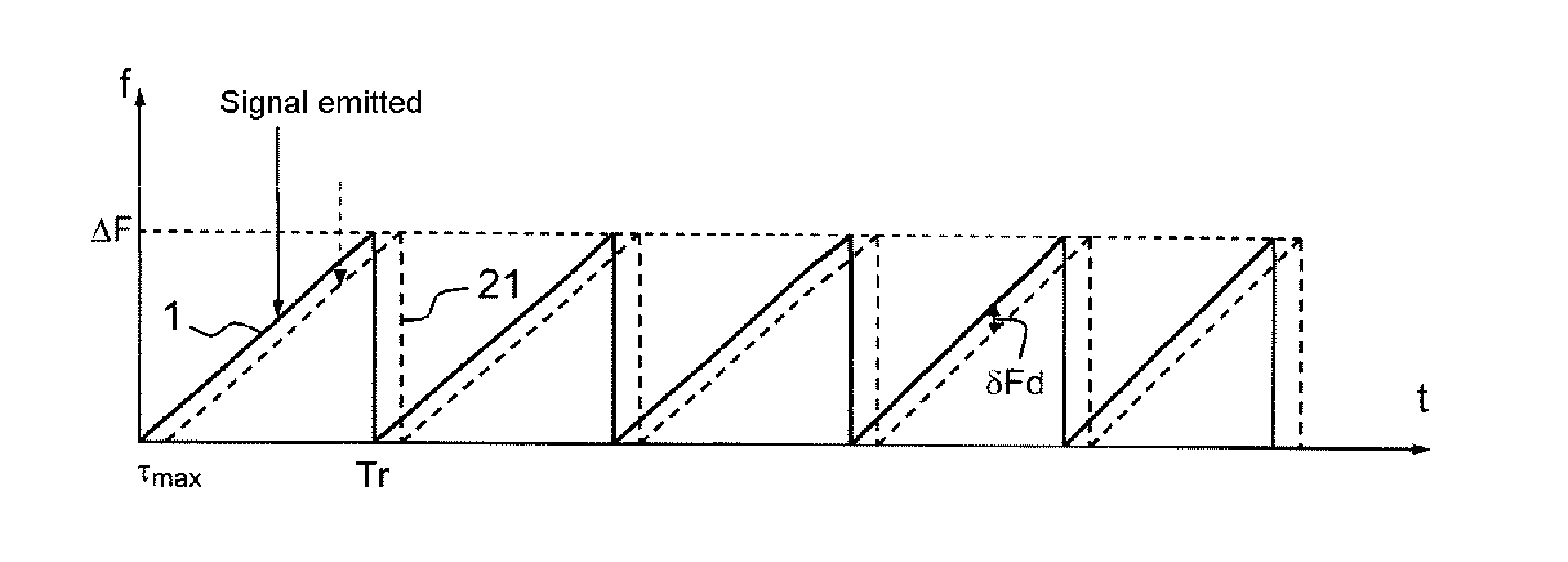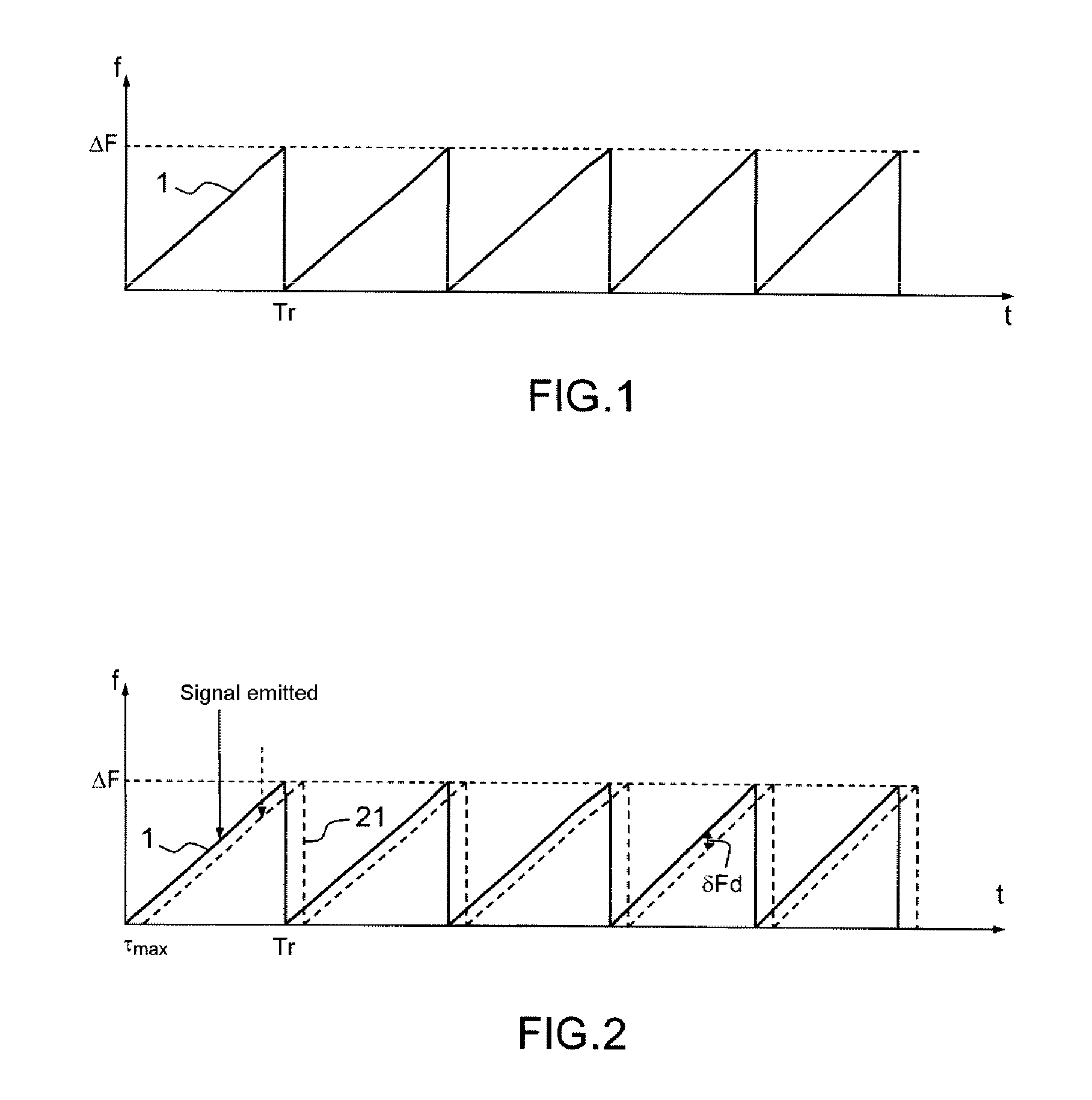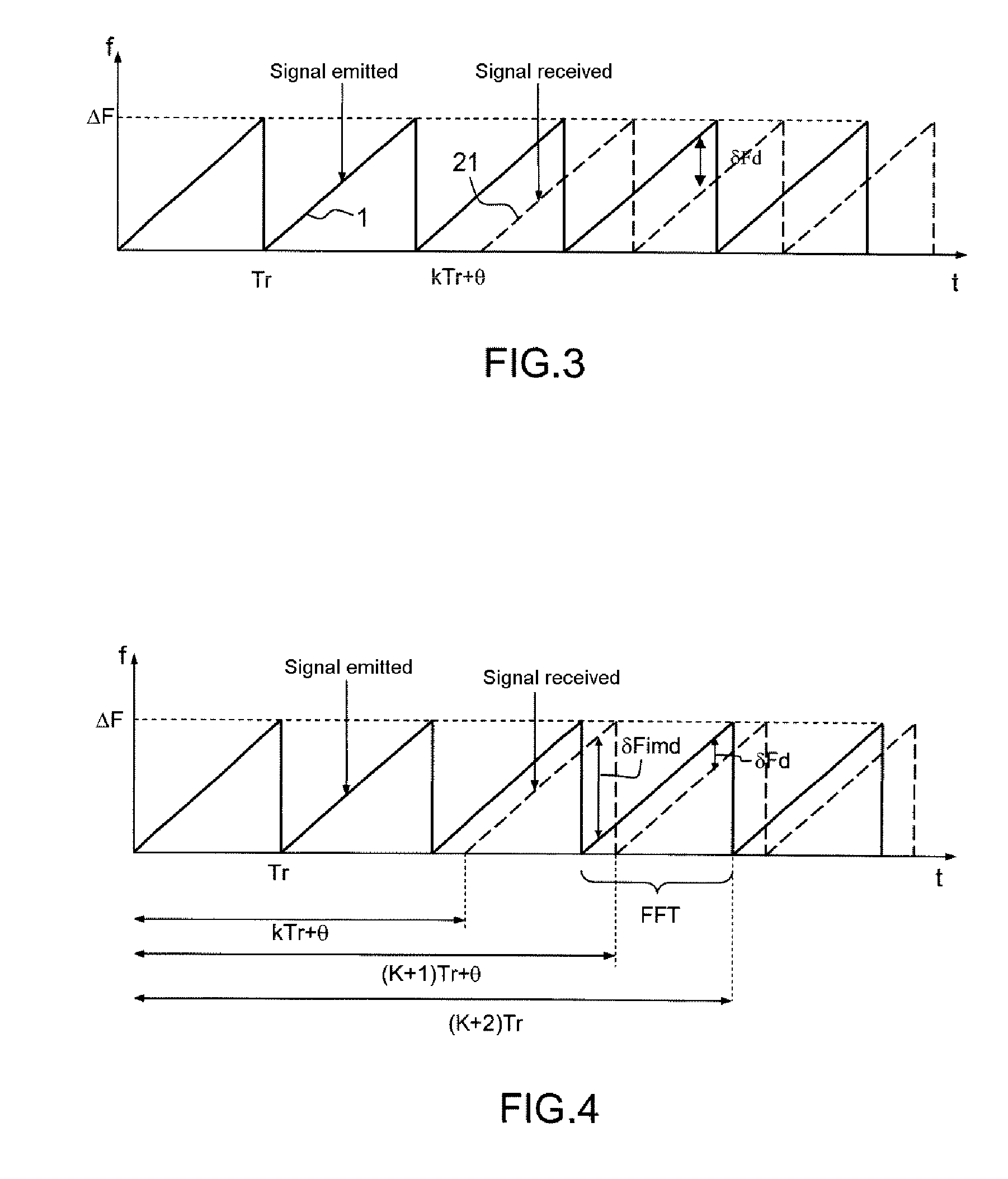Radar detection method, notably for airborne radars implementing an obstacle detection and avoidance function
a detection method and radar technology, applied in the field of radar detection methods, can solve the problems of not being able to optimize the efficiency of the radar waveform simultaneously, and no longer ensure the efficiency of the waveform
- Summary
- Abstract
- Description
- Claims
- Application Information
AI Technical Summary
Benefits of technology
Problems solved by technology
Method used
Image
Examples
Embodiment Construction
[0045]FIG. 1 presents, in a system of axes where the abscissae represent the time t and the ordinates the frequency f, a linearly modulated waveform in the form of frequency ramps 1 of amplitude, or modulation band, ΔF and of duration Tr. Such a waveform is conventionally called FMCW according to the expression “Frequency Modulation Continue Wave”.
[0046]The processing of the distance measurements, at reception, includes, for each ramp, demodulating the signal received by the image of the signal emitted, sampling the signal thus demodulated, and performing a digital Fourier transform on the sampled signal. This first step makes it possible to separate the targets in the distance domain. A second Fourier transform performed from ramp to ramp makes it possible to separate the targets by Doppler processing in the speed domain.
[0047]FIG. 2 presents the waveform 21 of the signal received, in the form of frequency ramps, opposite the waveform of the signal emitted 1 of FIG. 1. The two seri...
PUM
 Login to View More
Login to View More Abstract
Description
Claims
Application Information
 Login to View More
Login to View More - R&D
- Intellectual Property
- Life Sciences
- Materials
- Tech Scout
- Unparalleled Data Quality
- Higher Quality Content
- 60% Fewer Hallucinations
Browse by: Latest US Patents, China's latest patents, Technical Efficacy Thesaurus, Application Domain, Technology Topic, Popular Technical Reports.
© 2025 PatSnap. All rights reserved.Legal|Privacy policy|Modern Slavery Act Transparency Statement|Sitemap|About US| Contact US: help@patsnap.com



